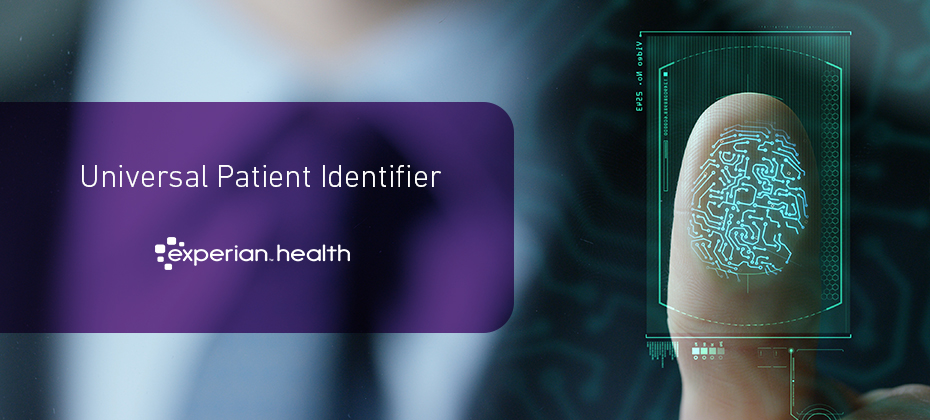All posts by Experian Health

Read the previous blog post in this Q&A series on segmenting patient populations for the COVID-19 vaccine. There are a lot of unknowns in the COVID-19 vaccine management process, which makes the rollout and administration of this vaccine even more challenging. Many providers are in the dark about how many vaccines they will get, they don’t know which patients to include and in what order and they aren’t sure how to keep staff from being overwhelmed. We interviewed Sanju Pratap, vice president of product management for consumer products at Experian Health, about what specifically is so challenging for scheduling the vaccine and what providers can do to prepare. What about the vaccine scheduling solution function is challenging providers? The unpredictable nature of available vaccines is a large part of what makes the scheduling for these vaccinations so difficult. Before now, providers haven’t had to manage mass quantities of appointment slots and related registrations and billing. And even with those features streamlined, providers are still unsure of the best way to reach out to eligible patients, in an equitable manner, to prompt them to schedule their appointment. What have we seen as the most effective and efficient way to schedule those patients for a vaccine? The ability to target patients specifically, either by email, phone or text, who are eligible for the vaccine can make a big difference. It removes a lot of the anxiety on the patient’s end while also making the scheduling experience as simple as possible for patients and staff. But outreach is just the first step. To really streamline the process, healthcare organization’s need to leverage a scheduling solution that incorporates scheduling rules and protocols. This ensures that a set number of appointments every day are designated for vaccinations and patients can see and schedule directly into those slots. When a patient schedules their vaccination through a system like this, providers can better track and recognize who needs to come in for a second dose. They can automate that process, by pushing out a message to the patient to schedule their second dose or offer to schedule that second dose on behalf of the patient before they leave the office using those same scheduling rules & inventory. How can a provider best equip the call center to handle volume and schedule appropriately the individuals who prefer to set an appointment that way? Given the high patient volume, the preferred method is for patients to schedule their appointment online, and for providers to push as much as they can online via self-service tools. This will minimize the initial load on the call center freeing agents to focus on those who truly need to schedule via the phone or need additional help. Even if a patient schedules their vaccination online, the information is shared with the call center which equips agents to help patients schedule their second dose. If or when a patient calls to schedule that dose, all agents need to do is search by first and last name, pull up the information and schedule the next dose on the spot. Watch our interview with Sanju below: Interested in learning more about how Experian Health can help supercharge the COVID-19 vaccine management process?

While the various waves of vaccine priority may be largely defined, the ability for many providers to segment their patient populations based on those designations isn't always simple. Without accurate data, there’s a risk that some vulnerable patients will be missed out. We interviewed Mindy Pankoke, senior product manager at Experian Health, about the challenges in segmenting patient populations for the COVID vaccine and how providers can best overcome those challenges. How does addressing patients’ barriers to care increase vaccination rates? The early versions of this vaccination have two doses which comes with its own set of challenges. Getting a vaccination is one thing but getting people to follow up for a second dose in a certain time frame is another. It’s the non-clinical factors that will prevent patients from getting the vaccine. So, things like inflexible work schedules, lack of transportation or even the access or comfort levels with technology required to schedule an appointment online can prevent patients from receiving or prioritizing the first and/or second dose. It can be an uneven playing field with those patients that do not have more flexible schedules, a vehicle or even access to the proper technology to schedule and register for both doses. It’s much easier for patients to prioritize getting the vaccine when those non-clinical factors are a non-issue. What challenges may providers face when trying to segment patient populations for vaccine administration? There are a lot of gaps in patient demographics which can make it difficult for providers to accurately identify and segment patients. Think information like date of birth or occupation. If providers want to segment by age, which many will likely do for the first wave of vaccinations, that would require a complete record of every patient with an accurate birth date. Providers may also want to segment by occupation, knowing essential workers are also eligible for the vaccine. But how can you understand who is an essential worker? Especially when that definition may vary by state or local government? Including non-clinical insights and enhancing demographic data as part of the patient record can help providers fill in the gaps and better segment patient populations for vaccine administration. By combining the power of Experian’s consumer demographic information with more than 40 years of experience compiling consumer data from self-reported and state license boards, Experian Health is able to drill down into occupation data to view different types of employment (construction, utility, etc.) for you to use to outreach, verify and streamline the scheduling (and automated scheduling) or the COVID vaccination. What are some best practices to move from identifying at risk or priority populations and operationalizing that information into actually administering the vaccine to those groups? This is really where it all comes together, and really where providers need to act fast. Once a group is identified, providers can automate the process as much as possible. First, it is imperative that providers clean up their data. Recent processing of Experian’s Universal Identity Manager solution has identified 1,800 duplicate records in COVID vaccination registrations, for individual facilities. Providers can remove the duplicates, enhance the demographics where they may be out of date or missing, and put in place a proactive system to call out and prevent duplicates moving forward. And the vaccine has a shelf life, correct? So even after segmenting the right patients, how can providers act fast to ensure it is administered? So another best practice is to automate the scheduling for as many vaccination appointments possible. With a tool like Patient Schedule, providers can leverage the demographic data to programmatically push out a notification to a patient’s cell phone via IVR or text message, have them verify their eligibility based on the age or occupation data from Experian, and then allow the patient to book their appointment on the spot for a time that works best with their schedule. On the back end, the Patient Schedule solution syncs with the clinic or mobile vaccination site’s calendar to confirm the appointment, allowing staff the opportunity to tackle other pieces of the COVID vaccination strategy. Anything else you'd like to add? Providers will also want to risk stratify using social determinants of health insight on the individual level. Patients in every wave of vaccine priority present an opportunity for better patient engagement (68% of the US is impacted by at least one social determinant of health hindering them from accessing or prioritizing their care). Many patients will need help adhering to that second dose and knowing that information and those circumstances on the individual level can help providers engage in the best way possible to ensure the vaccine is administered correctly. Interested in learning more about how Experian Health can help supercharge the COVID-19 vaccine management process?

How has the pandemic affected consumer attitudes around patient access? What do consumers want when it comes to accessing care? These are the questions providers must answer if they are to survive the pandemic and lay the groundwork for future financial success. Experian Health’s recent patient access survey offers a glimpse of what patients hope the digital front door will look like in 2021 and beyond. Wherever you are in the digital patient access journey, there's an opportunity to improve the experience for patients to one that will not only survive the tumult of the pandemic, but also thrive in the years ahead.

The number of urgent care facilities in the United States has topped 9,000 as of November 2019. The popularity of both urgent care centers and retail clinics is driven mainly by patients’ desires for more convenient, flexible and affordable access to care. Frustrated with long waits and inconvenient appointment times, more patients forego or completely abandon their primary care physician and flock to urgent care centers for care. A report from the Urgent Care Association found that one-quarter of patients seeking care at urgent care centers are unaffiliated with a primary care provider or medical home. This can put provider organizations in a tough spot financially as it forces them into a tight competition for business, both for new and returning patients – something many providers can’t afford to lose as they fight for revenue during COVID-19. Some organizations may think the only way to combat this trend, or at least stay ahead of it, is to create their own affiliated urgent care facility. While this does prevent lost business and revenue from patients leaving the organization, it is also a massive undertaking for any organization and an initial drain on resources, time and money. Providers can compete with this rise of urgent care facilities in more ways than simply building their own urgent care facilities. They can compete by offering same and next day appointments through online self-scheduling for patients into their already existing locations. By making same and next-day appointments available to patients through online self-scheduling, provider organizations can offer patients urgent care-like services for time-sensitive needs without having to invest or divert funds to build out their own urgent care centers. The availability to connect patients with quick, convenient care supports higher patient retention, making it possible for provider organizations to compete with others who have created urgent care centers. The lure of urgent care is its perceived convenience – walk-ins, same-day appointments, more flexible hours – but provider organizations can easily offer the same level of convenience to their patients with online self-scheduling. There is much less of a need to seek out other options for care when the provider you are most familiar with can also see you that same day. This is even more true during today, when patient volume is already scarce and the competition for business is at an all-time high. And with the vaccine roll-out underway, especially with retail clinics opening their doors for vaccine administration, the competition for business will be even stronger. In addition to building a better patient-provider relationship, keeping patients in-house for urgent care needs also fosters better care coordination. With medical history readily available, providers can more quickly and accurately treat an individual. Offering same and next-day appointments also helps to fully utilize physician capacity, which is often riddled with holes due to patient no-shows. Those open slots can be readily filled by patients seeking urgent care or those with timelier health needs. While millennials’ have largely been credited for the growing demand of urgent care centers, they’re not the only group looking for convenient access to care. The ability to schedule and access care in a timely and convenient manner is something everyone wants today – older adults, parents of younger children, and more. A failure to meet these individuals with the digital conveniences they’ve become accustomed to in so many other parts of their lives will only push them to new competitors that are in fact providing this experience. With the right technology, timely care is one of the simplest, yet most sought-after conveniences that healthcare groups can provide. Interested in learning more about how Experian Health can help your organization compete with urgent care and boost loyalty among existing patients? Contact us

If President Biden’s two trillion-dollar stimulus package is approved by Congress, support will include funding for a national vaccination program. While the arrival of the vaccine is an immense relief, the logistics for rolling it out across the country present a major challenge. Even at a rate of one million shots administered per day, it could still take 18 months to vaccinate 80% of the population. There are numerous supply, distribution and communication challenges to overcome, both at national and state levels. And for individual healthcare providers, mass vaccine administration calls for a holistic approach, to make sure the right patients get the right dose at the right time and place. Could data analytics and digital automation tools be the key to identifying, engaging and supporting patients as the vaccine program is rolled out? Here are 6 ways digital technology could help your organization improve vaccine management. 6 digital tools to include in your vaccine management plan Segment patient groups with consumer data Deciding who gets the vaccine first is only hurdle number one. Providers must then segment patient populations according to risk categories (such as age or occupation), so they know who should be at the top of the list. Without accurate consumer data, there’s a risk that some vulnerable patients will be missed out. The answer lies in data analytics. By synthesizing thousands of data points for more than 300 million Americans, ConsumerView gives providers the detailed insights needed to segment and target patient populations. At the tap of a button, providers can find out which patients are essential workers or in high-risk groups, so they can be channeled into the vaccine program without delay. Improve patient access and engagement with data insights According to the Kaiser Family Foundation, six in ten older adults say they don’t know when and where to get the vaccine. Many patients also face access barriers such as lack of transportation or childcare, or poor digital literacy. If providers don’t account for these in their outreach and engagement efforts, their vaccine program will fall flat. Consumer data can again help providers understand who their patients are, to identify those who might have trouble getting the vaccine. Insights on the social determinants of health can point to the best communication channels and support services to offer. Keep track of patient identities with secure patient portals If providers are reaching out to patients and encouraging them to schedule vaccine appointments through their patient portal, they must have confidence that the person signing up and logging in is who they say they are. The right security protocols can help validate and protect patient information. One example of identity proofing technology is Precise ID®, which uses knowledge-based authentication (questions only the real person would be able to answer) and device recognition to verify patient identities. Prompt patients to book a vaccine appointment with automated outreach Imagine if patients could receive a text or voice message notifying them that it’s time to schedule their vaccine, with a link and simple instructions on how to book. With automated outreach, providers can proactively text or call a segment of patients with self-scheduling options and specific messages about the vaccine and its safety. Not only will this help to increase vaccination rates, it’ll reduce call center volumes at a time when staff are already under pressure. Make it easy for patients to schedule appointments with online self-scheduling In order to meet daily goals for vaccine administration, it has to be easy for patients to book appointments. The last thing any provider wants is no-shows. By deploying scheduling software that ties vaccination qualification rules into the booking process, providers can match patients to a convenient slot, ensure they meet the correct segmentation criteria prior to booking, and confirm whether the appointment is for the first or second dose. And of course, an online self-service scheduling tool such as Patient Schedule allows this part of the patient journey to be completed with minimal face-to-face contact, minimizing risk of infection. Speed up reimbursement with automated coverage discovery Finally, providers must make sure that vaccine-related reimbursements run smoothly. CMS has ruled that every American should have access to the vaccine without incurring any out-of-pocket costs. But although the government may be footing the final bill, providers still need to seek reimbursement by payers, which means they still need a reliable way to check a patient’s coverage status. With Coverage Discovery, providers can run quick, comprehensive checks of commercial and government coverage, and identify the right payer for administrative services. Digital software and analytics can provide efficient, secure and convenient ways for providers to guide patients through the vaccine management process, without delay. Contact us for more information on how Experian Health can support your organization to deliver a vaccine management plan.

Consumers today want more flexible and convenient access to care, preferably through the self-service experience they are accustomed to in other areas of their lives. To answer this call, providers are turning to online self-scheduling, which allows patients to book an appointment with the provider of their choice any time of day or night via the comfort of their own home and on a mobile device. Incorporating a self-scheduling solution that reaps long-term success takes a specific strategy, and with the number self-scheduling vendors growing every day, it can be hard to know what to look for in a self-scheduling solution. How can providers be sure that their solution is scheduling patients effectively? Implement patient self-scheduling the right way. Online self-scheduling that automates scheduling protocols with customized business rules drives efficiency while ensuring bookings are accurate. If calling to schedule an appointment, schedulers will walk patients through a series of questions to determine the best possible provider and appointment time for their specific care need. The right scheduling solution should be able to seamlessly facilitate that question and answer process online. It not only ensures that patients are being matched with the right provider but keeps providers’ scheduling rules in mind throughout the entire process. For example, some providers may only designate certain days and appointment slots throughout the week for new patients. With those protocols included as part of the scheduling solution, providers can maintain control of their calendars while filling existing gaps.This is particularly vital during a pandemic like COVID-19 where to avoid further exposure and spread of the virus providers may only want to see patients experiencing those symptoms at certain times of day. The benefits are three-fold: schedulers, including call center agents and patients, see only appropriate appointment availability for a provider in real-time allowing them to book on the spot, providers can experience a more predictable schedule as they know their rules are being maintained, and patients can be assured that their health and safety is a top priority for in-office visits. Integrate with your EMR/PM system. Direct integration with any EMR/PM system is a key component for any successful scheduling solution as it provides everyone (patients, providers, health plans, and call center agents) with a continually up-to-date, real-time view of appointment availability. These integrations improve workflows behind the scenes while enabling the patient-centered aspect of the technology, which is the ability to book an appointment from a computer, phone, or tablet. Additionally, being able to provide a non-integrated scheduling experience for affiliated providers and other services is a vital additional offering that needs to be available outside the integration so that systems can open scheduling to all services. Having a solution that can do both is ideal. Offer a white-labeled experience. Customers remember and go back to brands they love, and that couldn’t be truer in healthcare. That is why it is important for organizations to deliver a consistent brand experience across the board—even with a self-scheduling solution hosted by an outside vendor. Leveraging a white-labeled scheduling solution promotes a strong brand experience and builds trust while saving patients the hassle and confusion of leaving the organization’s website to schedule via another. Moreover, many scheduling vendors require logins to their system in order to schedule, this is an unnecessary barrier to patient access. While useful for current or existing patients, a log-in may actually be a detriment to acquiring new patients or those who don’t yet have a relationship with your organization. Provide real-time scheduling (not just request an appointment). Unfortunately, many organizations claim to offer online self-scheduling, but the reality couldn’t be further from the truth. So many times, patients go through the entire online scheduling process to find out that they’ve only requested an appointment, and still have to wait for the provider to confirm and book, more often than not with a phone call which is what the patient was trying to avoid all along. Real-time scheduling means patients have the ability to view and actually choose their preferred appointment day and time and book right there on the spot. This also means that patients can book an appointment any time of day or night, outside of the provider’s business hours. Allow same and next day appointment scheduling. Many providers set aside appointment slots for their patients to schedule same- and next-day appointments for more urgent needs. These slots can be made available to patients online with a scheduling solution’s ability to automate business rules. Offering same- and next-day appointments online holds a few advantages: it’s certainly a competitive advantage against the growing number of standalone urgent care offices, but it also helps mitigate gaps in care as patients are less likely to present elsewhere for care. Send calendar reminders. The act of booking an appointment isn’t always enough to make a patient show up for scheduled care. Automated calendar reminders, specifically, ones that include .ics calendar files, sent to patients immediately after the booking process increase the chances that patients will show for their scheduled appointments. It’s a feature that dramatically reduces patient no-shows, which are often detrimental to the bottom line. Complement with automated outreach. Many health systems send automated phone and text campaigns to patients about their healthcare needs, but all of them still require a patient to call in to schedule an actual appointment. Minimizing the burden on patients could close more gaps in care, improve the patient experience and reduce call center workload at the same time. Automated, targeted outreach campaigns can help you do exactly this. With a simple text message or voice message, providers can prompt patients to book their next appointment right then and there, on the spot, as part of the text message or voice call.With automation, providers can contact and schedule more patients versus leveraging a call center to contact each person individually. And, when automated patient outreach is paired with digital scheduling, patients are far more likely to show up to appointments. Make referral scheduling easy. Providers can arm referral partners with dedicated scheduling links, making it easier for them to schedule certain services. These links can include a customizable Q&A that walks the scheduler through the booking process and allows them to schedule the referral appointment effortlessly and without a phone call. Internal referrals within a provider organization can be similarly managed with a digital scheduling interface. Where patients traditionally would have left the office with a list of providers to call for a follow-up, provider staff can now locate and book follow-up appointments for patients at the point of care before leaving. This not only improves referral capture rate but offers a better, more connected experience for patients as they can more easily navigate the continuum of care and, ultimately, achieve better health outcomes. Include availability on third-party scheduling sites. As providers open the digital front door to their practice, they will want to meet patients wherever they are online, outside of just the provider’s website. A sophisticated online scheduling solution will enable providers the ability to add scheduling links on third-party websites so that patients searching online for local providers or specialists can immediately see appointment availability down to specific days and times.Also, to ensure accurate bookings, the scheduling solution must be able to ask patients questions to ensure they qualify to book, ensuring that the provider’s calendar is protected while making access easier. Leverage analytics to understand your users. Where are patients dropping off during the scheduling process? What is the conversion rate? How many patients are actually showing up for their scheduled appointments? These are all important questions for providers to ask when gauging the effectiveness of their scheduling solution. The answers to each of these questions can refine and improve the scheduling process, and a sophisticated self-scheduling solution will come with real-time analytics dashboards and data science capabilities to help determine opportunities for improvement.Analytics and reporting can also be used to track capacity and utilization rates to help providers optimize their calendars and referral pathways. Analytics can provide insight into where referrals are being sent so that bottlenecks can be quickly and easily identified, and the behavior modified to better spread referrals across the network. The rise of consumerism in the healthcare industry is no doubt influencing the creation and adoption of self-scheduling solutions, among other digital technologies that improve patient access. As these technologies are more seriously considered, providers need to be aware of what to look for in a self-scheduling solution. Smart technology that incorporates the components above will stand out from the crowd, ready to fit the unique needs of any provider organization. Download our free guide to learn more about online self-scheduling and how it fits within an omni-channel access strategy.

Editor's note: This blog post was updated on October 2, 2023. In today's rapidly evolving healthcare landscape, the need for a standardized approach to patient matching and identification has become crucial. Not having a unique patient identifier (UPI) not only poses challenges to managing patient data but also hampers interoperability between healthcare organizations. A unique patient identifier (UPI) is a method for standardizing patient identification. Individuals are assigned a unique code, and that code, rather than a Social Security Number, name, or address, is what is used by healthcare organizations to identify and manage patient information. A standardized code like this not only protects sensitive health information but supports the exchange of data between healthcare organizations and states as it is a number and format easily read and recognized by all. Advocates for a coordinated approach to patient matching are continuing to make the case for a national unique patient identifier (UPI). In April 2023, healthcare organizations wrote to legislators urging them to reject language in the 2024 Health and Human Services appropriations bill that prohibits the use of federal funding for a national UPI standard. More than 150 healthcare and medical organizations signed the letter, including Experian Health. The coalition argues that a standardized approach to patient matching could save lives, avoid medical errors, reduce unnecessary costs and greatly improve operational efficiency. While federal funding currently remains off-limits, the industry is poised to move forward to develop a national patient identity solution that is cost-effective, scalable, secure and one that protects patient privacy. Let's explore how a UPI can revolutionize the healthcare industry and create a truly connected ecosystem. How a unique patient identifier is used in healthcare UPIs give providers and payers a way to link records for the same patient or member, so they have one complete record. Without a UPI, a provider may inadvertently create a duplicate patient record because a slight variation in the patient's name or address means their original record isn't accurately matched to them. A 2022 survey by Patient ID Now found that 6 in 10 healthcare organizations had estimated duplication rates of 4-8%, while 16% of organizations had more than 15 patients with the same name. If there's more than one record for a patient, providers may miss important medical information that's not carried through to the version of the record they're looking at. Unreliable records can also lead to misidentification, where patients with a similar name may have their records incorrectly matched. According to the ECRI Institute, misidentification is one of the top ten threats to patient safety. Patients could be given the wrong treatment or medication, with life-altering or fatal consequences. While patient safety is the top concern for providers, efficiency is another driver of attempts to improve records management. Organizations report spending $1.3 million per year on patient identity resolution, as resources must be redirected to figuring out who patients are and fixing errors. Being able to correctly link records for a complete view of an individual's identity can help circumvent these challenges. A unique patient identifier is the key to interoperability Managing patient data across the entire healthcare ecosystem is a long-standing challenge. Many organizations rely on master patient indexes to match patients using demographic data. But these single-source databases are rife with gaps, overlaps, and outdated patient information. They can't keep up with simple name and address changes or easily identify and fix data entry errors. A more effective solution involves combining data sets to create complete identities and profiles, where every piece of new data is instantly updated and verified. Experian Health uses referential matching technology to achieve a fuller picture of each patient's identity. The UPI then acts as a golden thread, linking each patient record correctly within and between systems. For example, if a provider has a patient in their EHR twice under two spellings of the patient's name, a UPI would link those two profiles, creating a singular view of the patient. If a pharmacy has a patient listed under a birth name but the doctor has them listed under their married name, a UPI can ensure both systems match the patient correctly. When combined with other patient engagement solutions, data and identity management tools create the infrastructure needed for healthcare to truly become one cohesive, patient- and member-centric network. It is important to note that the UPI is not a patient-facing number and is not known to the patient or provider. It does not collect or share any clinical claims or diagnostic information; its purpose is simply to link records together giving providers and payers a complete view of someone's identity. Improving the patient experience with a unique patient identifier Healthcare consumers are increasingly seeking digital-first, efficient processes, and they're sensitive to the need for robust data security. Healthcare organizations must demonstrate their ability to manage patient data properly from the patient's first interaction. If data management is inefficient, patients will find themselves being forced to fill out forms they've already filled out multiple times or undergo duplicate tests as they travel between facilities. Patients with similar names may be confused if they're shown someone else's details during the identification process. In an ecosystem built around a strong healthcare network, these discrepancies can be avoided. The patient's unique identifier remains consistent across every healthcare facility they visit – including physicians' offices, hospitals, pharmacies, specialists and long-term care facilities – so all providers know exactly who they are. While patients welcome a more convenient, coordinated experience, they'll also be reassured by the reduced risk of medical errors that comes with a well-connected healthcare network. Efforts to improve patient identity resolution in healthcare While there may not be a national UPI yet, the industry is trying to find workaround solutions. The Centers for Medicare & Medicaid replaced Social Security Numbers with Medicare Beneficiary Numbers as the primary means of identifying Medicare beneficiaries. But while this addresses the risk of data breaches, it doesn't resolve the interoperability challenge. Another initiative is Project US@ (Project USA), run by the Office of the National Coordinator for Health Information Technology (ONC). This aims to create a consistent healthcare industry-wide specification for representing patient addresses, to improve address accuracy. This would ensure that, for example, the same street name written as “road” and “Rd.” is not mistakenly viewed as two different addresses by the software. To support efforts to integrate disparate software solutions, Experian Health announced in 2019 that every person in the United States had successfully been assigned a unique UPI, powered by Experian Health Universal Identity Manager (UIM) and NCPDP Standards™ (the “UPI”). Combining Experian's expansive data assets and innovative UIM technology along with NCPDP standards, each person who has received medical care or used a pharmacy has been assigned a UPI. As new patients enter the healthcare ecosystem, this number will continue to grow. Dave Roberts, VP of Platform Products at Experian Health, says that “the technological foundation is already in place for data interoperability through the creation of UPIs that are maintained in a master person index. These solutions are vendor-neutral, meaning data can flow freely between disparate electronic health systems, regardless of size or location.” Utilizing Experian Health's Patient Identity Solutions The implementation of unique patient identifiers holds immense potential for creating a connected healthcare ecosystem. By standardizing patient identification and enhancing data management, a unique patient identifier can improve patient safety, reduce costs, and streamline processes across the entire healthcare industry. Find out more about how Experian Health's patient identity solutions serve as stepping stones towards a more efficient and patient-centric healthcare network.

Health plans have been fighting against inaccurate member data, incomplete member profiles and duplicate records for years. Without a watertight way to keep track of patient identities so health data is reliably linked and accessible across multiple services, payers can’t always be confident that the record in front of them matches the member they have in mind. The pandemic has brought this into sharp focus: positive COVID-19 test results aren’t always following members from service to service, and as the vaccination program rolls out, knowing who has had the disease and who has been vaccinated could be difficult to monitor. As health data expands exponentially and the need to share and connect member records becomes more urgent and complicated, the challenges facing health plans will only grow. Could a unique patient identifier (UPI) be the answer? 4 member matching challenges that health plans could solve with a UPI 1. The healthcare ecosystem lacks 21st Century Cures Act data coordination The lack of integrated systems to transfer member data securely contributes to safety issues, payment delays and potential audits and fines. Over a third of denied claims for health systems result from inaccurate patient information, costing them at least $6 billion per year. While this would seem not to impact the payer, the inability to properly link claims to members could lead to an inability to understand the risk represented by the members being covered. Or worse, an inability to anticipate and monitor trends in members health and provide proactive healthcare options. A unique patient identifier can connect the dots between different parts of the healthcare ecosystem so duplicate and incomplete member data can be detected and eliminated. With a more complete picture of who a member is, health plans can make decisions based on accurate information and exchange data safely and securely. There’s a far lower risk of acting without knowing about recent treatment or test results, or communicating using the wrong address (or even to the wrong member). 2. Healthcare providers have outgrown traditional matching tools With the volume and variability of health data to be matched, traditional matching tools are no longer fit for purpose. For example, an enterprise master patient index (EMPI), which links all versions of a patient’s record across several facilities, may seem reliable. However, by relying on a single source of demographic data, EMPIs likely replicate errors and outdated information, and may combine records for patients who share certain demographic information (for example, if two patients have similar names and the same date of birth). Instead, payers should consider a matching solution that combines member roster information with comprehensive third-party reference data. Member records are matched using referential and probabilistic matching, and connected using a UPI. This gives health plans a more complete picture of their members, built on reliable health, credit, and consumer data sources, and allows all parties to understand the person at the center of it all. 3. Discrepancies in member data make care coordination impossible Members may use different names or nicknames, their address may change, and they may even share a Social Security Number (SSN) with someone else. How can health plans help to coordinate care if they’re not sure they’re tracking the right member? A single electronic health record (EHR) can follow the member throughout their healthcare journey with a UPI, so health plans can be confident that the person on the phone or in the office matches the record on screen. They can monitor and respond to gaps in care, allowing them to better coordinate care for better patient health, improved member engagement and money-saving operational efficiencies. 4. Members present to multiple facilities, inhibiting care plan tracking How can health plans reliably track medication adherence, especially when members present to multiple locations? Is there really a gap in care, or did the member just attend a different facility? And if members go to different pharmacies, how can a pharmacist be sure the prescription is going to the right person? All of this can create risks to patient safety and increased costs for payers. A UPI can help. Experian Health has teamed up with the National Council for Prescription Drug Programs (NCPDP), which sets standards for pharmacy services to exchange electronic healthcare data. A framework has been built for a UPI-based patient matching solution that the entire US healthcare network can use. Not only will this improve patient safety, it’ll minimize staff time spent on reconciling incorrect records, thus boosting financial performance too. When it comes to mismatched records, prevention is better than cure. With a Universal Identity Manager, health plans can have confidence in the accuracy and security of the data they’re using and sharing, promote patient safety, and improve staff productivity. Contact us to learn more.

Experian Health products referenced in this blog post: Patient Engagement Solutions Patient Scheduling Precise ID Patient Payment Estimates Patient Payment Solutions To access more insights and trends, download the entire white paper: How has the pandemic affected consumer attitudes toward patient access? What kind of digital experience do consumers expect from their healthcare provider in 2021? Are patients and providers on the same page when it comes to self-service in the healthcare journey? Providers must answer these questions if they are to improve their digital front door, boost patient loyalty and withstand the financial impact of COVID-19. While we know that a satisfying patient access experience translates to a stronger revenue cycle, change can feel risky without knowing what consumers really want. Experian Health surveyed hundreds of healthcare consumers and providers to find out what each expects from patient access in 2021, and uncovered opportunities for providers to lay the groundwork for future financial success. Survey findings: 4 revenue-boosting opportunities for patient access in 2021 1. More control and convenience for consumers Nearly eight in ten consumer survey respondents want to be able to schedule their own appointments, at any time of day or night, from their home or mobile device. They can already order groceries and view their bank accounts this way – and they want the same level of control and convenience when managing the non-clinical aspects of their healthcare. Digital patient engagement solutions allow providers to offer consumers the flexibility and accessibility they crave. Patients can schedule appointments online, complete registration from home and pay bills from a mobile device. Convenience also delivers health benefits: no-shows are less likely, and patients find it easier to adhere to care plans. And while COVID-19 remains a concern, self-service options minimize face-to-face contact, keeping staff and patients safe. Automating patient access even contributes to better collection rates, for example, by reducing errors that can lead to denied claims. 2. But don’t deliver convenience at the expense of safety and security Patients want convenience, but they also want their data to be kept safe. More than half of consumers surveyed, particularly the younger age groups, say they worry about security when accessing their personal details online. Security can be challenging for providers: they need multi-layered solutions that can adapt to security threats that evolve with ever-increasing complexity, without creating cumbersome log-in processes for patients. But with the right technology, providers can safeguard patient data with confidence. Experian Health’s patient portal security tools use leading-edge identity proofing, risk-based authentication and knowledge-based questions to reliably verify patient identities. Patients can book appointments, register for care or view their health information. Calls to IT support are likely to drop too, saving staff and patients valuable time. 3. Contactless care requirements are driving long term, systemic change While many of these changes were already simmering in the background, the pandemic has turned up the heat and accelerated the need for contactless care. Will this be a long-term trend? Both patients and providers believe self-service technology is here to stay and seven in ten providers surveyed say they don’t expect patients to feel comfortable in waiting rooms until at least summer 2021. While face-to-face care will always be important, it seems likely that a digital front door will become the default to make the non-clinical portion of the healthcare journey easier and quicker for everyone. “As providers expand the use of patient portals, there is a huge opportunity to demonstrate the true value of virtual care – and transform healthcare for the long-term." - Tom Cox, general manager, head of product, Experian Health 4. The financial conversation between consumers and providers must be based on trust, transparency and empathy When the final bill bears no resemblance to initial estimates, patients feel frustrated and misled. With deductibles and out-of-pocket expenses on the rise, patients are demanding simple and clear pricing information so they can plan accordingly. Providers that offer consumers transparency, understanding, control and convenience when managing their financial responsibilities are going to have the competitive edge. Providers can achieve this with clear, upfront and accurate pricing estimates to help patients understand their financial obligations before their visit. Next, support to check coverage and advice on tailored payment plans will provide patients with as many tools as possible as they plan to meet those obligations. Experian Health’s Patient Payment Solutions can check for patient coverage, identify a payment plan(s) that suits a patient’s individual situation, and then make it easy to pay via a mobile device. Future provider revenue hinges on investment in digital healthcare. A welcoming, convenient and secure digital front door translates to patient loyalty, which in turn can mitigate losses in challenging times. Wherever are in digital patient access journey, there’s an opportunity to improve the experience for patients and build a revenue cycle that not only survives the tumult of the pandemic, but also thrives in the years ahead.
